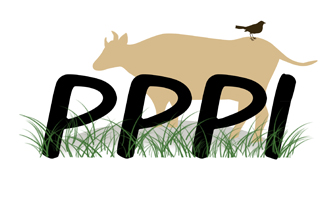Today the Government of Saskatchewan announced the approval of Project Albany potash mine, with some conditions. Our media release follows. See below for links to more details.
PUBLIC PASTURES – PUBLIC INTEREST
MEDIA RELEASE, For immediate release, Wednesday September 4, 2019
Potash mine approval means destruction of already dwindling prairie landscapes
Regina, Saskatchewan Approval of the proposed Project Albany solution mine has the potential to have a large negative impact on the little remaining natural landscape in the area.
The Province of Saskatchewan has approved with conditions a proposal for a new solution potash mine that could harm or destroy up to 6,000 hectares (14,800 acres) of important grassland, wetland and riparian (creek valley slopes) habitat in the upper Wascana Creek watershed in the Rural Municipalities of Francis and Lajord, southeast of Regina.
“It’s good to see that the Province is putting some conditions on their approval,” said Trevor Herriot, spokesperson for Public Pastures—Public Interest, “but we hope the project will be shut down during the next phase of approvals. In a time when young people are calling on political leaders to make wise decisions for the future regarding climate change and water use, how can this government justify a project that will salinize and permanently remove millions of cubic meters of water from the Qu’Appelle Watershed, while destroying habitat for 146 species of prairie wildlife and plants, including thirteen species at risk, and releasing untold tons of greenhouse gases?”
Recent mapping shows that in Saskatchewan we have lost more than 86% of our original native prairie habitat, on which many species depend. Remaining tracts of native grassland and wetland provide habitat that should be protected at all costs. Even small areas of remaining grassland and wetland habitat are important.
The government has included a requirement for a compensation plan for native grasslands and wetlands affected by the project. CanPacific will be required to “identify the methods to restore/enhance existing areas or create new native prairie/wetlands, and provide a timeline for completing the work and monitoring the areas.”. While restoration might sound reasonable to the layperson, grassland and wetland ecologists will tell you that even the best restoration is a poor substitute for old growth prairie and long-established wetlands. And when industry says they will restore habitat the results are even worse: degraded landscapes infested with invasive species – this does not replace the local beauty, heritage, diversity, or the endangered habitats that have been destroyed.
The government is offering CanPacific the option to consider “compensatory native grasslands and wetland”. It is unclear whether the Government would consider the inclusion of the purchase of offsets, purchasing native grasslands or wetlands in another location, to buy off the damage that Project Albany will do to the land. This process may help preserve the purchased land, but does not replace the land that has been damaged in the potash project area.
Further, while CanPacific states that the project doesn’t affect publicly-owned pastures or grasslands, it does affect privately-owned land and leased Crown land. Wildlife does not know the difference. All land is important.
PPPI believes that approval should have stipulated that all native landscapes and wetlands must not be disturbed or impacted by the development in order for a project to proceed. A fuller explanation is needed as to why the mine couldn’t have been shifted to nearby cultivated lands, reducing the displacement of the Species at Risk that depend on the grasslands, wetlands and creek valleys.
The approval conditions require further environmental submissions regarding power transmission lines, the raw water pipeline from Buffalo Pound Lake and other water supply lines, natural gas pipelines, provincial or rural municipality road upgrades and rail spur lines for which the government must approve a “separate application to be submitted by the responsible party.” These and many other unanswered questions indicate the extent of the impact this project will have.
The approval is only for the project’s priority well sites, not the long-term 20 year and ultimate well field areas. Further submissions will be required to expand into the full extent of the project. By requiring further environmental assessment before the full project can be approved the government is wisely recognizing the extensive impact this project could have and the need for a closer review.
With approval for Project Albany there are also other concerns, such as increased soil salinity on farm land and the extensive use of our scarce water resource. The water will be drawn from Lake Diefenbaker, via Buffalo Pound Lake, using from 8,760,000 to 14,454,000 cubic meters per year, one and a half to two and a half times that used by the City of Moose Jaw.
The Government is starting to recognize the wide public interest in preserving natural habitat, as evidenced by the large number of submissions in this regard to the project’s Environmental Impact Assessment process. Will the Ministry tell us how many of the submissions expressed concern over the development?
Worthy of note:
- CanPacific Potash is a partnership between Russian fertilizer giant JSC Acron and a subsidiary of Rio Tinto, a giant mining company, notorious for its lengthy environmental rap sheet. (See this site: https://www.corp-research.org/rio-tinto)
- The project’s massive well-field area would fragment, disturb and strip surface vegetation from 6,000 hectares (14,800 acres): 4,394 ha of pasture/grassland, 1,002 ha of wetland, and 802 ha of riparian habitat to build roads, well sites and pipelines to pump the water needed to extract potash.
Industrializing the Prairie: Solution Potash Mining in Saskatchewan
A short video put together by volunteers with Public Pastures–Public Interest to show what solution potash mining does to the land. Published on July 8, 2019. https://www.youtube.com/watch?v=b6xckkNEI0Q&feature=youtu.be
More information
Government media release https://www.saskatchewan.ca/government/news-and-media/2019/september/04/albany-potash-project
The Ministerial decision and reasons for the decision – short document with important details. https://publications.saskatchewan.ca/#/categories/4385
CanPacific public engagement website with their media release http://www.projectalbany.ca

